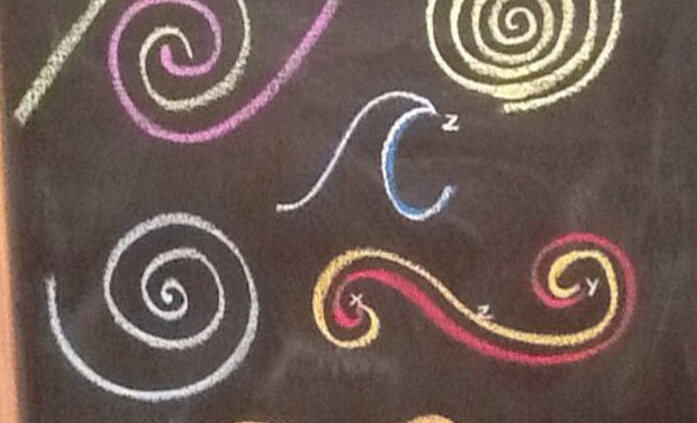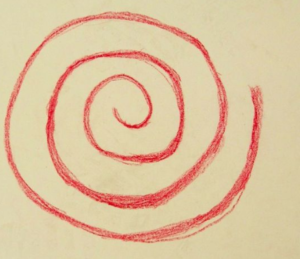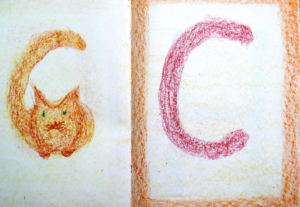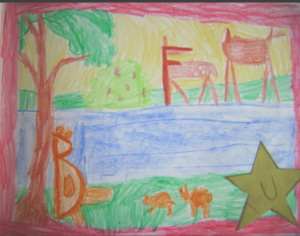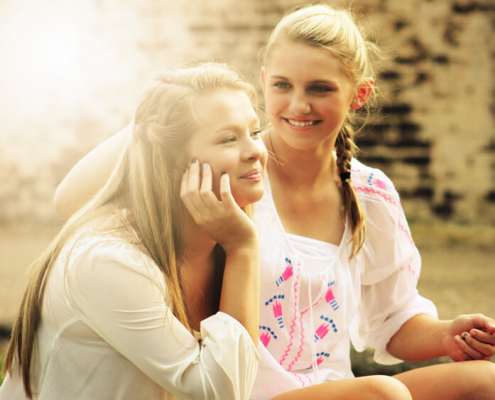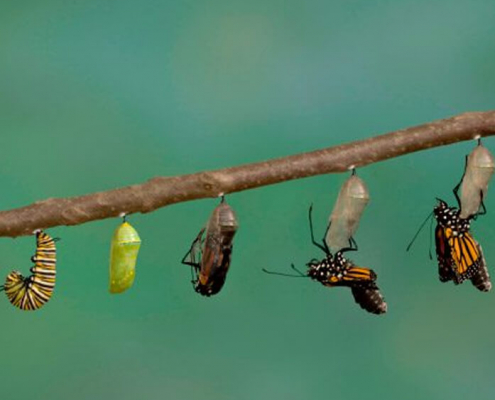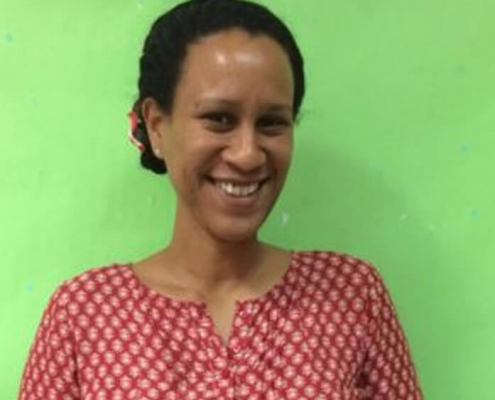Form drawing, a path to literacy
Written by Carrie Riley, early childhood teacher in Trinus
In December I shared how the preschooler and kindergarten children prepare to learn through their play. Now I will share a bit more on how a Waldorf child will be taught how to write in grades.
As Waldorf teachers we work in blocks. During our writing block we don’t just practice writing like in traditional school, we do so much more! We will include movement, games, art, songs and stories as well. It is one of the things I love most about Waldorf teaching.
Being able to teach children creatively, we are able to include all children. We are balancing our lessons with «Head, Heart and Hands» and this stimulates the brain activity. For example, we will tell a story about a spiral (maybe about walking into a cave as it turns inward, then after finding a treasure, we must walk out of the cave following the turns until we come out into the light). Then we will act it out, then we will walk a spiral, take a piece of yarn and make a spiral then use a block and straight crayon to follow the path into and out of the cave.
The children really live the experience and it will live with them always. As they learn how to make a spiral (or any form) they get better at it and strengthen their hand muscles. All this is to help prepare them for writing.
We start to use block crayons to do basic form drawings like this:
Letters will start to appear in stories. The children excitedly «find» the letters in the teacher drawings, then they do their own in their book.
Children decorate their own books, then they copy the teachers work from the board.
Here is a story by fellow Waldorf teacher (Michael Seifert) and is a good example of what a first grade teacher would tell. Many stories are riddles and those kind of stories help with critical thinking as well as creating vivid pictures in their mind, feeding their ever so important imagination.
After the story, a chalkboard drawing is made (or it is already made, and hiding under a cloth waiting to be reviewed when the story is done. Each teacher does this their own way) and the children will make their own picture or form drawing in their handmade textbooks.
Peter and Lucy were sitting on the grass trying to think of an answer to Old Willie Weeping Willow’s riddle. Only one color, but not one size, Stuck at the bottom, yet easily flies, Present in sun, but not in rain, Doing no harm, and feeling no pain. What am I? The clouds overhead floated in front of the sun and it suddenly got chilly and grey. Then the clouds passed and the sun came back Peter looked at his feet and stretched his legs.
Lucy stretched her arms above her head. Then both together looked at the ground and noticed the same thing. Something moved as they moved. They looked at each other and up they sprang. «It is a … shadow!» «Hmmph,» said Old Willie Weeping Willow. He didn’t really want to give away his branches. Just then the Merry Little Breezes came over the water. «Did we hear something about our mother the wind?»
They started looping little circles around Old Willie Weeping Willow’s branches. They would start from below and loop around one branch close to the ground, then loop around the branch above it, and then a third branch above the second before swooping down to the ground to start over with another low branch.
All four breezes teased Old Willie Weeping Willow with their game. They tickled his bark and they tickled his leaves. Old Willie Weeping Willow tried to swat them away with this arm and that arm, but they were too quick. Around and around, in and out they went, and as Old Willie Weeping Willow tried to swat them, he began to loose a branch here and a branch there.
When the breezes went on their merry little way, Lucy and Peter began to pick up the thin fallen shoots. «Thank you,» Lucy said. «You are so kind and generous.» Old Willie Weeping Willow was pleased at the complement and at last said, «You’re welcome, little ones. And if you want to swing out over the pond and swim later, you’re the only children I would let hold my arms.» They all busily worked together until at last they had built a little raft just big enough for Peter, Lucy, Polly, and Chipper. Mother Goose was pleased to think she would have guests for lunch. Thank, thank, thank you children for finding a way so I can have guests.
Here is a riddle for you: I sizzle like bacon, I am made with an egg. I have a good backbone, but I lack a good leg. I shed like onion, but still remain whole. I am long as a flagpole, and fit in a hole. What am I?
Then she said, «Please, children, be on the lookout for the Sneaky Sammy Snake. He’s always up to some sneaky mischief.» Carefully they got on board, but they didn’t see that Sneaky Sammy Snake had already curled himself in between the logs. With a steady stroke, Peter’s paddled the raft after Mother Goose and her seven little goslings across the pond. As they crossed, the merry little breezes danced ahead of them making little waves. Up and down the little raft went as Lucy and Peter thought about the riddle.
I hope you enjoyed this example of how writing is introduced to the children and how they prepare for this step.
Next time I will share a bit more on reading and math in the early grades.
